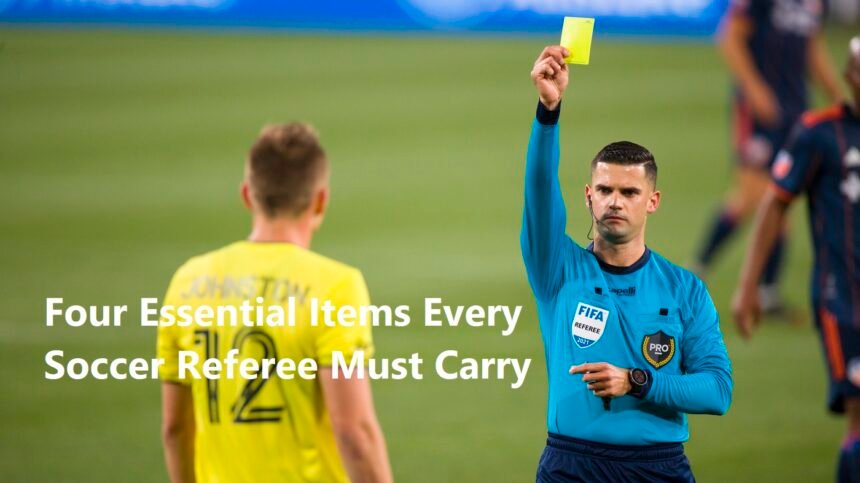Soccer referees play a pivotal role in ensuring fair play, enforcing rules, and maintaining the flow of the game. Their authority hinges not only on their knowledge of the sport but also on the tools they carry. FIFA, the governing body of world soccer, mandates specific equipment for referees to execute their duties effectively. Below are four indispensable items every match official must have:
- The Whistle
The whistle is the referee’s primary communication tool. It signals the start and end of play, stops the game for fouls or injuries, and restarts action after pauses. A sharp, loud whistle cuts through stadium noise, ensuring players and coaches immediately recognize decisions.
Modern referees often use high-quality pea-less whistles, like the Fox 40, which are durable and perform well in all weather conditions. The frequency and tone of the whistle also convey urgency—a short blast might indicate a minor foul, while repeated bursts could signal a serious infringement or a need for immediate attention (e.g., player injury). Consistency in whistle use helps maintain clarity and respect on the field.
- The Stopwatch or Referee Watch
Timekeeping is critical in soccer. Referees use a specialized stopwatch to track the 45-minute halves, account for stoppage time (injury delays, substitutions), and ensure fair play. Unlike regular watches, referee watches often feature multiple timers, countdown alerts, and synchronization capabilities to align with assistant referees’ devices.
Accurate timekeeping prevents disputes over added minutes, especially in tightly contested matches. The watch is paused during significant interruptions, such as injuries or VAR reviews, ensuring neither team loses time unfairly. A backup watch is also recommended in case of technical failures.
- Yellow and Red Cards
The iconic colored cards are universal symbols of discipline. A yellow card cautions players for unsporting behavior, persistent fouling, or dissent, while a red card ejects them from the game for severe offenses like violent conduct or denying a goal-scoring opportunity.
Cards must be displayed clearly to the offending player and recorded in the referee’s notebook. Their psychological impact is profound: a yellow card can deter further aggression, while a red card shifts match dynamics entirely. Referees carry both cards in a waterproof, easily accessible holder to ensure quick responses during heated moments.
- The Coin
A simple yet vital tool, the coin is used for the pre-match toss to decide which team chooses the starting side or takes the initial kickoff. The toss fosters fairness and sets the game’s tone. In knockout matches requiring extra time, the coin may also determine penalty shootout order.
While any coin suffices, many referees opt for customized coins featuring league logos for ceremonial significance. The ritual underscores the referee’s role as an impartial arbiter.
Additional Considerations
Though not always listed among the “essentials,” a referee notebook and pen are crucial for documenting incidents, substitutions, and timekeeping details. This record serves as an official account in case of post-match disputes or disciplinary reviews.
The whistle, watch, cards, and coin form the foundation of a referee’s toolkit, each serving a unique purpose in upholding the integrity of the game. These items empower referees to command respect, enforce rules, and adapt to dynamic match conditions. Beyond their functional roles, they symbolize the referee’s authority and commitment to fairness—a reminder that soccer’s beauty lies not just in goals but in the structured chaos governed by those in black.












